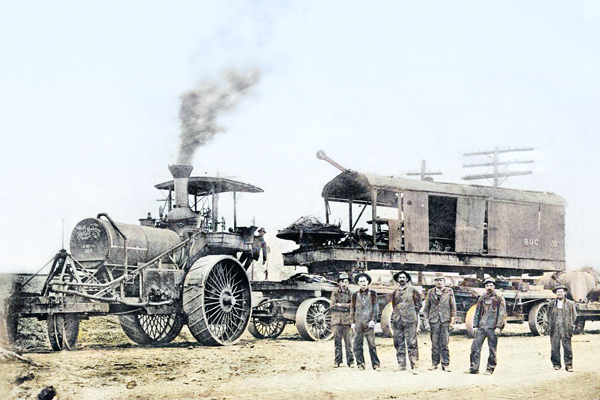Traction engines were large, powerful, steam-powered machines capable of pulling heavy loads over terrain rather than tracks. They were used from the late 1850s to the mid-1900s to tow massive loads.

Few roads and rails were in the desert then, and folks hoped that machines could function better than horses and mules. What Were Traction Engines For?
Mining: Mines and mills scattered all over the Mojave Desert, and traction engines moved ore other cargo.
Borax: Perhaps you have heard “20-mule teams” hauling borax (a mineral in cleaners and such) out of Death Valley Someone once considered traction engines might haul it out faster. But the desert had other plans.
Desert Freighting: Traction engines also delivered food and provisions to places without a train.
Why Didn’t They Work So Well?
Water Problems: They were steam engines, and steam requires water. The Mojave Desert is hardly filled with water, so keeping the engines supplied with water over long distances wasn’t easy. Tough
Terrain: The desert’s soft sand and rock tracks proved challenging for heavy equipment to navigate. It was prone to breakdowns or getting stuck on these routes.
Tough to Fix: These complex engines require experienced people to operate them. If something went awry in the difficult and remote terrain, it was not simple to repair.
What Happened to Them? Traction engines didn’t survive long in the Mojave. They were more difficult to operate than mules, trucks, and trains. However, they remain significant in desert history. The machines demonstrated how people always attempted to discover better means of tackling difficult challenges.
Today, you can see old traction engines in museums or rusty ones along abandoned mining areas. They remind us of when people were ready to try new things, even if they did not always succeed.